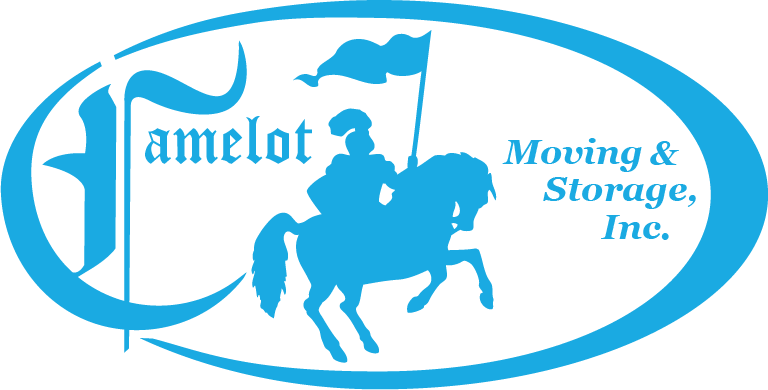How to Prepare Your Office for Commercial Movers
Office relocations offer their unique challenges. In addition to office furniture, computers, printers, phone systems, and personal belongings, most commercial office moves involve transporting many boxes of business paperwork, such as client files and records, various permits, documentation, and applications.
Regardless of your industry, moving the office from one place to another requires careful planning and attention to detail. Investing in professional office movers is the best way to ensure that your office will be ready for normal operations on Monday morning. Below is a step-by-step plan for preparing your business for a stress-free relocation.
9 Steps to Prepare for an Office Relocation
Step 1: Pick a Relocation Date and Book Your Movers
As you begin planning your relocation, you will want to decide on a date for when you want to move. Try to pick a date during a quieter week, avoiding overlapping with any major deadlines. When you determine the date, you can contact commercial movers to schedule your moving needs.
Camelot Moving & Storage offers professional office relocation services. The full service includes packing, unpacking boxes, and setting up your office furniture so you will be set up to continue business by the next day.
Step 2: Declutter: Scan and Shred!
Before your commercial movers come, take time to declutter the office. Often, papers, documents, and other records get put off for future dates and eventually pile up. As you sort through your drawers and filing cabinets, you can scan or shred old documents, recycle unneeded items, and downsize records you don't need at the new office.
Decluttering allows you to start fresh and organized at your new office. It also helps to have fewer boxes for your professional office movers to load and for you to unpack. Why pay to relocate items you no longer need?
Step 3: Create a Map (Ideally Color-Coded) of the New Location
Utilize your color-coded labeling system to create a map of your new workplace. Create a color-coded map of your new office by department and workstation that coordinates with your labels. Post a map at the entrance to each floor, department, or suite of offices. Your detail-oriented office relocation crew will be able to keep moving as they easily set up your new workplace precisely to your plan.
Step 4: Communicate with Your Moving Company
Communication is key to successful office relocation. A good idea for the weeks leading up to your move is to stay in contact with your commercial movers. Call and speak with the moving company about the following items before Moving Day:
The layout of the current building plan and office space
The design of the new building and office space
Your color-coded map of where items will go upon arrival
The amount of items you are moving
How to access the current building and the new building
What floor level you will be on and any stairs or elevators they may need to take
Where the moving trucks can park to load and unload, you may need to check with your city about regulations and permits for trucks around the office building
Taking time to work with your commercial movers so that everyone is on the same page for Moving Day will help you have a smooth transition. Planning takes time, but it is a good return on your time investment in the end.
Step 5: Stock Up on Labels and Permanent Markers
For an office relocation, the importance of labels cannot be overstressed! The faster your professional office movers can identify each item's destination, the quicker they can complete the move and get your enterprise back to work. Create a system to designate each item's department and workstation.
Everything should have a label, from boxes to office furniture, area rugs, chairs, and wastebaskets! Use large, brightly color-coded labels that will be very helpful during your move. With accurate and complete labeling, your commercial movers can deliver every item to its correct workstation without needing much of your time or attention.
Step 6: Empty Your Filing Cabinets
Whether hiring commercial movers or handling your office relocation internally, you must empty most lateral filing cabinets before moving. Single upright metal filing cabinets may remain full if they do not need transporting up or down the stairs. They can be loaded onto a dolly and wheeled to their new location.
However, all credenza-style filing cabinets (long and horizontal) will need their contents moved to heavy-duty professional moving boxes. The same applies to flat-file cabinets (used by architects, printers, publishers, and designers) and most filing cabinets used in medical practices.
When packing your files into boxes for your commercial movers, take the time to ensure they stay upright and in the same order as they were in the filing cabinet so that they don't fall out of order. As you box the files in order, clearly label the front and rear of the packing box with the files' content and their department. By taking time to mark the filing boxes, you'll be able to locate them quickly and return them to the correct filing cabinet at your new office.
Step 7: Start Packing
By Moving Day, bookshelves and desktops should be cleared and items inside desks should be secured. Fragile items, inside or on top of the desk, should be wrapped and placed into a box with plenty of packing materials. Lamps need to be broken down and packed. For more tips on preparing your workspace for Moving Day, click here.
Packing can be a daunting task that takes away from your business activities. Camelot's team of movers are experts at preparingfurniture, artwork, and other belongings quickly and securely so you can continue working.
Step 8: Prepare Your Furniture
Furniture prepping is an important task that your professional movers will handle. Camelot's professional office movers are experts at getting your furniture broken down, wrapped, and loaded in a manner that will protect it during transport. Prepare your office furniture before Moving Day by labeling where the items will go in the new office and have them cleaned and cleared for the movers.
Our commercial movers know the importance of caring for furniture that is moving from one location to the next. Camelot's movers take special care and time to pad, load, unload, and set up your office furniture.
Step 9: Have Everything Ready to Reopen
Commercial movers become your best friends during an office relocation. There are many aspects for you to think about during a relocation: break down, set up, and getting everything going again. Camelot's movers are experts at helping our clients at the new facility to set back up and get back to work by Monday morning.
As you plan and mark your labels, boxes, furniture, equipment, etc., our team will work to get everything to the precise locations you prefer. In addition, they will unpack your boxes and set up your furniture and workspaces in time for you to reopen. You don't have to spend the time and employee power to get going again when you have great commercial movers at your service.
Camelot Moving & Storage: Your Trusted Source for Office Relocation Services
With over 35 years of experience moving offices for businesses in the Santa Clarita Valley and Southern California, Camelot is an expert at office relocations. If you need to move, but your new office space isn't ready just yet, read our tips for preparing your items for storage. If you want to know more about us and wish to discuss moving your office, visit our contact us page to connect with our team of professional office movers.
AtCamelot Moving & Storage, we service both short-distance moving andlong-distance moving experiences, including relocating offices for businesses of all kinds. Our commercial movers can help alleviate some stress associated with anoffice relocation! Call today to get your free quote.





